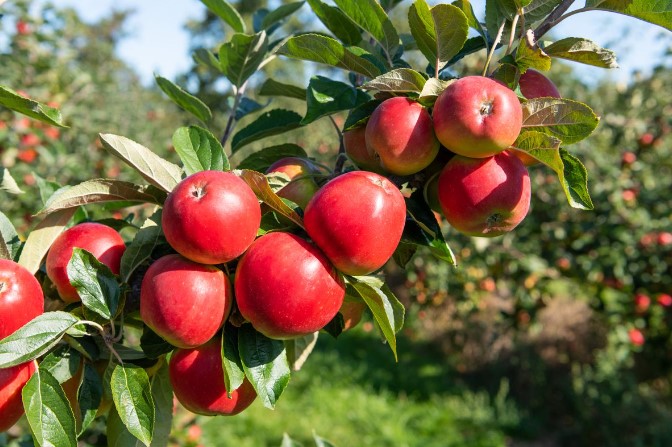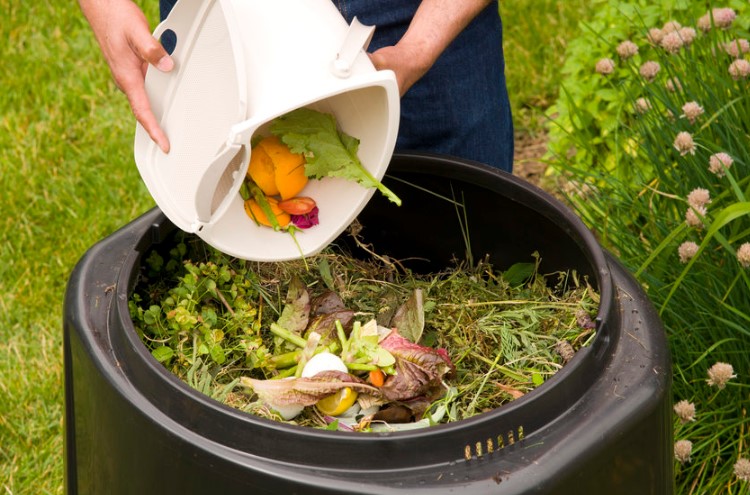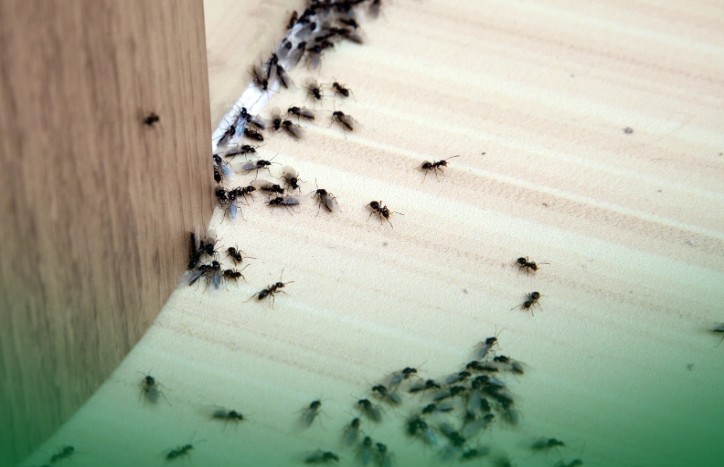Pro Gardener Discusses What Makes a Great Apple Tree Purchase

When it comes to cultivating an apple tree, making a wise purchase is the cornerstone of future success. This decision is particularly significant for those residing in Britain, where the climate and soil conditions are conducive to growing a variety of apple species. In this comprehensive guide, we will explore the essential factors that contribute to a great apple tree purchase, drawing insights from the experience and expertise of a professional gardener.
Understanding the Basics
Before delving into the specifics, it’s important to grasp the fundamental aspects of apple tree cultivation. Apple trees, or Malus domestica, thrive best in temperate climates. Britain’s moderate climate, with its mix of rainfall and sunshine, provides an ideal environment for these trees. However, choosing the right fruit tree goes beyond mere climatic suitability. It involves considering factors like rootstock, cultivar, tree age, and the health of the tree at the point of purchase.
Choosing the Right Cultivar
A pro gardener from https://www.fruit-trees.com/ emphasizes that the first step in selecting an apple tree is choosing the right cultivar. Britain is home to a wide array of apple varieties, each with its unique characteristics. These range from the popular culinary apples, such as the Bramley, to dessert varieties like the Cox’s Orange Pippin and Egremont Russet. Each cultivar has specific growing requirements and offers different flavors, textures, and uses.
The intended use of the apples plays a crucial role in this decision. If you are looking for apples to cook with, a robust culinary apple like the Bramley might be ideal. For those who enjoy fresh, sweet apples, a dessert apple such as the Gala or Fuji could be more suitable. Additionally, consider the storage capabilities of the apples. Some varieties, like the Granny Smith, store well over the winter, providing fresh fruit long after the harvest season has ended.
Rootstock Considerations
The rootstock of an apple tree influences its size, vigor, and disease resistance. Rootstocks are often categorized by their vigor: dwarfing, semi-dwarfing, and vigorous. Each type has its pros and cons, and the choice depends on your specific needs and space availability.
Dwarfing rootstocks, such as M9 and M26, produce smaller trees that are easier to manage and harvest. These are ideal for smaller gardens or for those who prefer to grow apple trees in containers. Semi-dwarfing rootstocks, like MM106, offer a balance between tree size and yield, making them suitable for medium-sized gardens. Vigorous rootstocks, such as MM111, produce large, robust trees that can withstand harsher conditions and typically require more space and maintenance.
Tree Age and Size
When purchasing an apple tree, the age and size of the tree are important considerations. Young trees, often referred to as “whips,” are typically one to two years old and stand about four to six feet tall. These trees are less expensive and establish quickly in their new environment, but they require more initial care and patience before they begin to bear fruit.
On the other hand, older, more mature trees can bear fruit sooner and are often more resilient against pests and diseases. However, they tend to be more expensive and might experience more transplant shock, which can affect their initial growth.
Health and Quality of the Tree
A crucial aspect of a great apple tree purchase is ensuring the health and quality of the tree. A healthy tree is more likely to establish well and thrive in its new environment. Here are some key indicators to look for:
Roots: Examine the roots for any signs of damage, disease, or rot. The roots should be moist, healthy, and abundant. Avoid trees with dry, brittle, or sparse roots, as these are signs of poor health.
Trunk and Branches: Check the trunk for any signs of damage or disease. It should be straight, strong, and free of blemishes. The branches should be evenly distributed around the trunk and show no signs of dieback or canker.
Leaves and Buds: If the tree is in leaf, look for healthy, vibrant foliage. The leaves should be free of pests, disease, and discoloration. If the tree is dormant, check for healthy buds that are plump and firm.
Grafting Union: Many apple trees are grafted, meaning the desired apple variety is grafted onto a rootstock. Check the grafting union (the point where the scion and rootstock meet) for any signs of weakness, damage, or disease.
Disease Resistance
In Britain, apple trees can be susceptible to various diseases, such as apple scab, powdery mildew, and fire blight. Choosing a cultivar with good disease resistance can significantly reduce the need for chemical interventions and enhance the overall health of your orchard.
Modern apple breeding programs have developed many disease-resistant varieties. For example, some popular disease-resistant cultivars include ‘Freedom’ and ‘Liberty,’ which offer resistance to common ailments while still producing high-quality fruit. Researching and selecting disease-resistant varieties can save time and effort in the long run, making your apple-growing experience more enjoyable and successful.
Pollination Considerations
Apple trees require cross-pollination to produce fruit. This means that you will need at least two different apple trees that bloom at the same time to ensure successful pollination. Some apple varieties are self-sterile and cannot pollinate themselves, while others are partially self-fertile but still benefit from cross-pollination.
To maximize fruit set, it is advisable to plant multiple apple trees of different but compatible varieties. Check the blooming period of each cultivar to ensure they overlap. Alternatively, you can plant a single self-fertile variety if space is limited, but bear in mind that even self-fertile trees will produce better yields with a pollination partner.
Local Climate and Soil Conditions
Britain’s climate varies from region to region, and it is important to consider your local conditions when purchasing an apple tree. Some apple varieties are more suited to certain climates. For instance, coastal regions may benefit from varieties that are more tolerant of salty air and strong winds, while inland areas might favor cultivars that can withstand frost.
Soil conditions also play a vital role in the success of your apple tree. Apple trees prefer well-drained, fertile soil with a pH between 6.0 and 7.0. Conduct a soil test to determine your soil’s pH and nutrient levels. If necessary, amend the soil to create optimal conditions for your apple tree. Ensuring proper drainage is crucial, as waterlogged soils can lead to root rot and other issues.
Container-Grown vs. Bare-Root Trees
Apple trees are typically sold in two forms: container-grown and bare-root. Each type has its advantages and disadvantages.
Container-grown trees are sold in pots and can be planted at any time of the year, provided the ground is not frozen. They are usually more expensive but offer the advantage of a well-established root system that is less prone to transplant shock. These trees are ideal for those who prefer to plant outside the traditional planting season or who have specific timing requirements.
Bare-root trees, on the other hand, are sold without soil around their roots and are usually available in the dormant season, from late autumn to early spring. They are less expensive and easier to transport. Bare-root trees often establish more quickly in their new location because their roots adapt faster to the native soil. However, they must be planted promptly after purchase to prevent the roots from drying out.
Purchasing from Reputable Sources
One of the best ways to ensure you are buying a high-quality apple tree is to purchase from reputable nurseries or garden centers. Look for suppliers with a proven track record of providing healthy, disease-free plants. Reputable nurseries often provide detailed information about the tree’s cultivar, rootstock, and growing requirements. They may also offer guarantees or warranties on their plants, giving you peace of mind.
It is also worth considering local suppliers, as they are more likely to offer varieties well-suited to your regional climate and soil conditions. Additionally, local nurseries can provide valuable advice and support tailored to your specific growing environment.
Planting and Initial Care
Once you have selected and purchased your apple tree, proper planting and initial care are crucial to its long-term success. Here are some essential steps to follow:
Site Selection: Choose a planting site with full sun and good air circulation. Avoid low-lying areas where cold air and frost can settle, and ensure the site has well-drained soil.
Planting: Create a hole that is the same depth and twice as wide as the root system of the tree. Make sure the graft union is above soil level when you carefully stretch out the tree’s roots and plant it in the hole. To remove any air pockets, gently compact the earth surrounding the roots as you backfill the hole.
Watering: Water the tree thoroughly after planting and keep the soil consistently moist but not waterlogged. Young trees require regular watering, especially during dry periods.
Mulching: Mulch the area surrounding the tree’s base to control soil temperature, prevent weed growth, and preserve moisture. To avoid rot, keep the mulch a few inches away from the trunk.
Staking: If necessary, stake the tree to provide support and protect it from strong winds. Use soft ties to avoid damaging the trunk.
Pruning: To shape the tree and get rid of any unhealthy or diseased branches, prune it in late winter or early spring. Pruning trees correctly promotes strong development and increases fruit yield.
Long-Term Care and Maintenance
After planting, ongoing care and maintenance are essential to ensure your apple tree thrives and produces abundant fruit. Here are some key practices to follow:
Fertilizing: Apply a balanced fertilizer in early spring to provide essential nutrients for growth and fruit production. Follow the manufacturer’s recommendations for application rates and frequency.
Watering: Continue to water the tree regularly, especially during dry spells. Mature trees generally require less frequent watering, but it is important to monitor soil moisture levels.
Pruning: Regularly prune the tree to maintain its shape, remove dead or diseased wood, and encourage air circulation. Summer pruning can also help control tree size and improve fruit quality.
Pest and Disease Management: Monitor the tree for signs of pests and diseases. Implement integrated pest management (IPM) strategies, such as encouraging beneficial insects, using organic sprays, and practicing good garden hygiene.
Harvesting: Harvest apples when they reach their full size and color and detach easily from the tree. Handle the fruit gently to avoid bruising and store it in a cool, dark place.
Conclusion
Purchasing a great apple tree involves careful consideration of various factors, from choosing the right cultivar and rootstock to ensuring the tree’s health and quality. By understanding these key elements and following best practices for planting and care, you can enjoy the rewards of a thriving apple tree that produces delicious, home-grown fruit for years to come. Whether you are a seasoned gardener or a novice, the joy of nurturing an apple tree and reaping its harvest is a fulfilling and rewarding experience.








